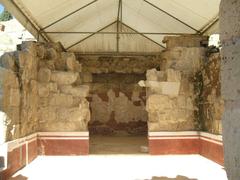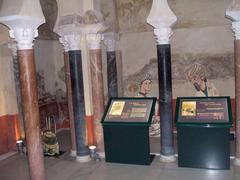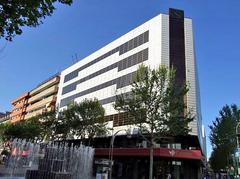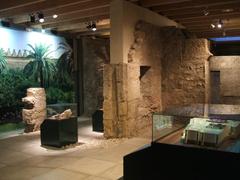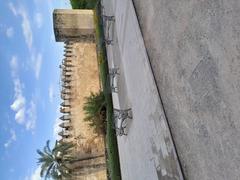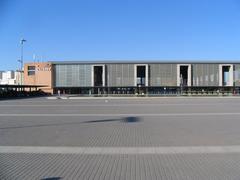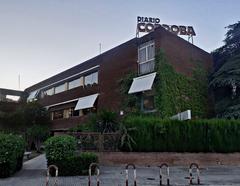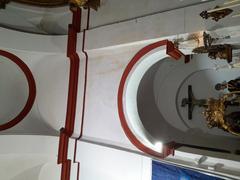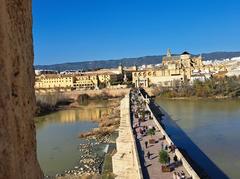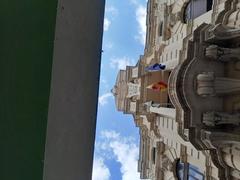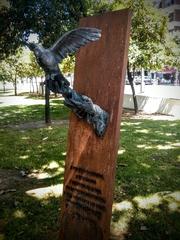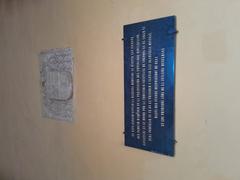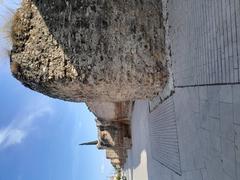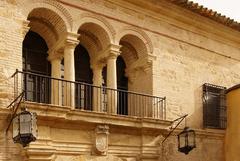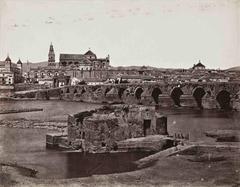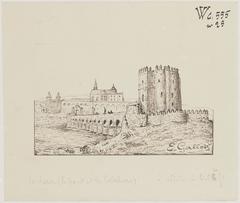
Madinat Al-Zahra: Visiting Hours, Tickets, and the Ultimate Guide to Córdoba’s Historic Caliphal City
Date: 14/06/2025
Introduction: The Radiant Legacy of Madinat Al-Zahra
Just west of Córdoba, Spain, lie the evocative remains of Madinat Al-Zahra, the “Shining City” of the Umayyad Caliphate. Founded in 936 CE by Abd ar-Rahman III, the first Caliph of Córdoba, this palatial city was a monumental statement of power, artistry, and cultural ambition. Madinat Al-Zahra served as the Caliphate’s political and administrative heart, dazzling contemporaries with its architectural innovation and opulence (Travel Thru History; Turismo de Córdoba). Though destroyed in the early 11th century, its ruins—excavated since the early 20th century—now form Spain’s largest archaeological site of Islamic heritage and are inscribed as a UNESCO World Heritage Site. This guide offers everything you need for your visit, from historical context and architectural highlights to practical details on tickets, hours, and accessibility, ensuring you make the most of this remarkable destination (New York Latin Culture; medinaazahara.org).
Table of Contents
- Introduction
- History and Foundation
- Urban Layout and Architectural Features
- Artistic and Cultural Significance
- Decline, Destruction, and Rediscovery
- UNESCO World Heritage Status
- Visiting Hours, Tickets, and Access
- Visitor Center, Facilities, and Accessibility
- Guided Tours and Visitor Tips
- Nearby Attractions in Córdoba
- Frequently Asked Questions
- Conclusion
- Resources and Further Reading
History and Foundation: The Birth of a Caliphal Dream
Madinat Al-Zahra, also known as Medina Azahara, was established in 936 CE as an assertion of Umayyad independence from the Abbasids in Baghdad. Built about 8 km west of Córdoba at the foot of the Sierra Morena, the city was the seat of government and a symbol of the Caliphate’s might. While legend attributes its name to Abd ar-Rahman III’s favorite concubine, Azahara, modern scholarship highlights its political and dynastic significance: a city designed to manifest the Caliph’s power and the cultural zenith of Al-Andalus (Travel Thru History; Turismo de Córdoba).
Over 10,000 workers and artisans from across the Mediterranean labored for more than 25 years to create Madinat Al-Zahra, blending architectural and artistic traditions from the Islamic world and beyond. At its height, the city housed up to 20,000 people and boasted palaces, gardens, administrative quarters, markets, and a mosque (Travel Thru History).
Urban Layout and Architectural Features
Terraced Splendor
Madinat Al-Zahra was ingeniously planned across three terraces:
- Upper Terrace: Home to the Caliph’s palace, administrative offices, and the main ceremonial entrance known as the Great Oriental Portico. The Salón Rico (Rich Hall), renowned for its marble, gold, and carved stucco, was the centerpiece for diplomatic receptions (Turismo de Córdoba).
- Middle Terrace: Hosted court officials, gardens, and bureaucratic functions.
- Lower Terrace: Contained markets, public baths, the Royal Mint, housing for commoners and cavalry, and the city’s mosque—located just outside the main walls (Travel Thru History).
Artistic Innovation
The city’s architecture masterfully fused Umayyad Syrian traditions with North African and Iberian motifs. Horseshoe arches, ataurique (vegetal carvings), intricate mosaics, and reflecting pools created an atmosphere of refinement and luxury. Imported marbles and precious stones were used throughout, while the gardens—planted with almond trees—evoked the legendary snow of Granada (The Collector; Travel Thru History).
Artistic and Cultural Significance
Madinat Al-Zahra was more than a palace: it was a vibrant center for poetry, science, translation, and the arts. Scholars and diplomats from the Islamic world and Europe visited, leaving accounts of its grandeur. The city symbolized the Umayyad caliph’s legitimacy, with its artistic synthesis influencing both Islamic and European traditions (New York Latin Culture; Medium).
Decline, Destruction, and Rediscovery
The city’s splendor was short-lived. Civil wars and internal strife led to its destruction by Berber troops in 1010 CE—less than a century after its founding (Travel Thru History). The site was plundered for centuries, its stones reused in other cities. Rediscovered through archaeological excavations in the 20th century, about one-tenth of Madinat Al-Zahra has been uncovered, revealing the upper terrace and key structures (Turismo de Córdoba).
UNESCO World Heritage Status
In 2018, Madinat Al-Zahra was designated a UNESCO World Heritage Site, recognized as the finest example of a planned caliphal city and the largest archaeological site of Islamic Spain (New York Latin Culture). This status ensures ongoing research, preservation, and international recognition.
Visiting Hours, Tickets, and Access
Location and Access
- Address: 8 km west of Córdoba, signposted via the A-431 Palma del Río road (medinaazahara.org).
- Car: Free parking at the visitor center; private vehicles not permitted beyond this point.
- Public Transport: Dedicated bus service from Córdoba’s city center runs Tuesday to Sunday. Shuttle bus from the visitor center to the site is mandatory for all visitors.
Opening Hours
- March: Tue–Sat 09:00–18:00; Sun/holidays 09:00–15:00; closed Mon.
- April–June: Tue–Sat 09:00–21:00; Sun/holidays 09:00–15:00; closed Mon.
- July–Sept: Tue–Sun 09:00–15:00; closed Mon.
- Oct–Dec: Tue–Sat 09:00–18:00; Sun/holidays 09:00–15:00; closed Mon.
- Closed: Mondays, Jan 1 & 6, May 1, Dec 24, 25, 31 (travelvibe.net; artencordoba.com).
Admission Fees
- EU Residents: Free with valid ID (andalucia.com).
- Non-EU Residents: €1.50 per person.
- Shuttle Bus: €3 return fare (required for all visitors).
- Tickets: Purchase at the visitor center, online in advance, or included in guided tours (medinaazahara.org).
Visitor Center, Facilities, and Accessibility
The visitor center features a ticket office, museum with artifacts and multimedia, café, restrooms, and gift shop. The center and shuttle bus are wheelchair-accessible; however, the archaeological site itself has uneven terrain, and accessibility may be limited in some areas (andalucia.com).
Guided Tours and Visitor Tips
- Guided Tours: Highly recommended for historical context and access to key areas; book online or at the visitor center (medinaazahara.org).
- Audio Guides: Available at the visitor center in multiple languages (mappingspain.com).
- Best Time to Visit: Early morning or late afternoon for cooler temperatures and better light.
- What to Bring: Sun protection, water, and sturdy shoes.
- Duration: Allow 2–4 hours for a thorough visit, including the museum and shuttle transfer.
- Photography: Personal photography is allowed; tripods may require special permission.
Nearby Attractions in Córdoba
After visiting Madinat Al-Zahra, explore other iconic sites:
- The Great Mosque-Cathedral of Córdoba—an architectural masterpiece and UNESCO World Heritage Site.
- Alcázar de los Reyes Cristianos—medieval fortress with lush gardens.
- Roman Bridge and Calahorra Tower—offering panoramic city views.
- The Jewish Quarter (Judería)—a maze of historical streets and synagogues.
Frequently Asked Questions (FAQ)
Q: How do I get to Madinat Al-Zahra?
A: By car (free parking at visitor center), bus from Córdoba city center, then mandatory shuttle to the site (medinaazahara.org).
Q: Do I need to buy tickets in advance?
A: Recommended, especially in high season, or for guided tours.
Q: Is the site accessible for wheelchairs?
A: Visitor center and shuttle bus are accessible, but the site itself has uneven terrain.
Q: Are guided tours available?
A: Yes—book in advance for the best experience.
Q: Can I bring food?
A: Only water is allowed on the archaeological site; a café is available at the visitor center.
Conclusion
Madinat Al-Zahra is a luminous testament to the cultural, political, and artistic heights of Islamic Spain. Its carefully excavated terraces, majestic ruins, and insightful museum provide a unique window into the world of 10th-century Al-Andalus. With its convenient visitor facilities, guided tours, and easy access from Córdoba, Madinat Al-Zahra should be at the top of any itinerary exploring Spain’s historical treasures.
Plan your visit by checking current hours and booking tickets in advance. For the best travel experience, download the Audiala app, explore our related articles on Córdoba’s historic sites, and follow us on social media for updates and tips.
Visuals and Maps
Sources and Further Reading
- Travel Thru History – Madinat Al-Zahra
- Turismo de Córdoba – Madinat Al-Zahra
- New York Latin Culture – Madinat al-Zahra
- Medium – Madinat al-Zahra: Artistic Synthesis and Political Messaging
- Wikipedia – Madinat al-Zahira
- Madinat al-Zahra Visitor Information – MedinaAzahara.org
- Madinat al-Zahra Visitor Information – Andalucia.com
- Madinat Al-Zahra Practical Visitor Guide – Mapping Spain
- Moorish Art and Islamic Art in Medieval Spain – The Collector
- Tourist Information and Schedules – Artencordoba.com
- Travel Vibe – Medina Azahara Córdoba
